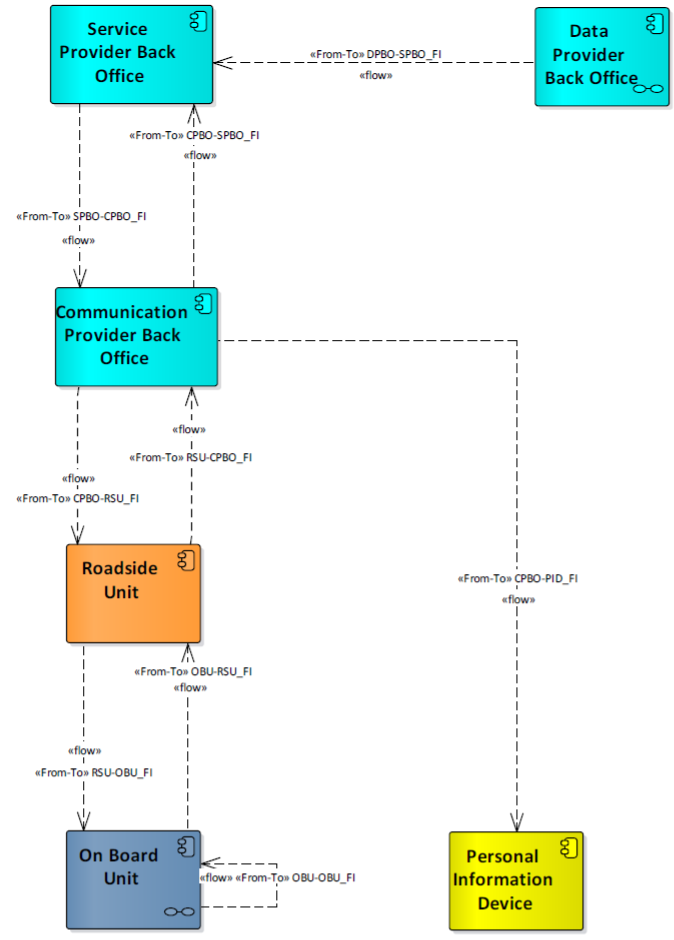Flexible Infrastructure (FI)
The objective of Flexible Infrastructure is to inform traffic users about the lanes provided downstream of the current position and in the driving direction of the vehicle.
Taking into account various stakeholders’ views, a list of business model blueprints that address current or future challenges of urban areas, together with their operating and value-capture scenarios depicting the inner-workings of the business models, and the exchange of costs-benefits among stakeholders, have been created for the Flexible Infrastructure service.
Detailed information about Flexible Infrastructure architecture can be found here.

Within the C-MobILE project the Flexible Infrastructure service is implemented in three Deployment Sites: Barcelona, Bordeaux, and Thessaloniki.
In Barcelona the Flexible Infrastructure service is implemented using cellular communication technology. This service covers the entries of Túnel de Vallvidrera, a tunnel connecting Barcelona with the surrounding cities in the north-west. Applus IDIADA is the service provider receiving information on reversible lanes and speed limits from the tunnel operator, Túnels de Barcelona i Cadí, and providing it to the drivers through an App.
In Bordeaux the Flexible Infrastructure service is implemented using both cellular and ITS-G5 communication technologies. This service is deployed in 3 zones, where information about the infrastructure is broadcasted to road users:
- Indication of car pooling lanes
- Indication of bus lanes on the ring road
- Indication of open/closed lanes on Pont d’Aquitaine (in cooperation with DIRA)
The service provider for FI is NeoGLS and the service is available through the public application “CTD – Connected Mobility”.
In Thessaloniki the Flexible Infrastructure service is implemented to provide information about lane changes and closures due to road works. This information is provided by the Region of Central Macedonia (http://www.pkm.gov.gr/), which is responsible for the operation of the Traffic Management Center. The information is sent to the service provider, the Hellenic Institute of Transport (CERTH-HIT), which provides it to the drivers through their App (cmobile.imet.gr).